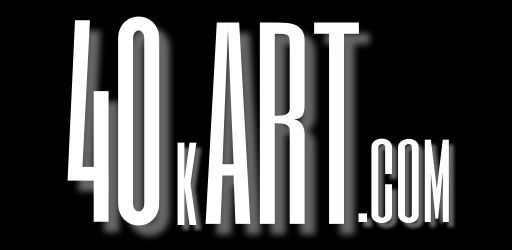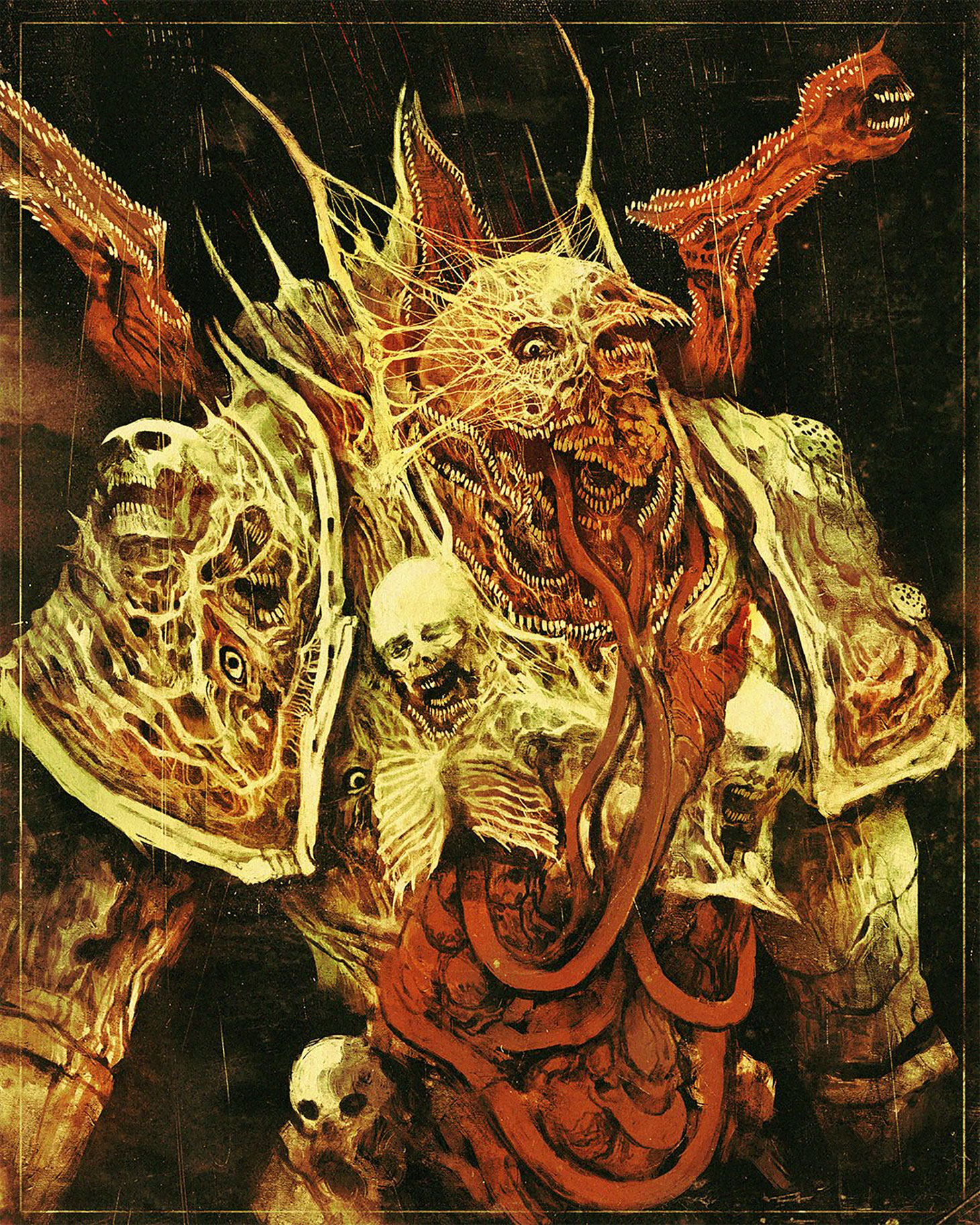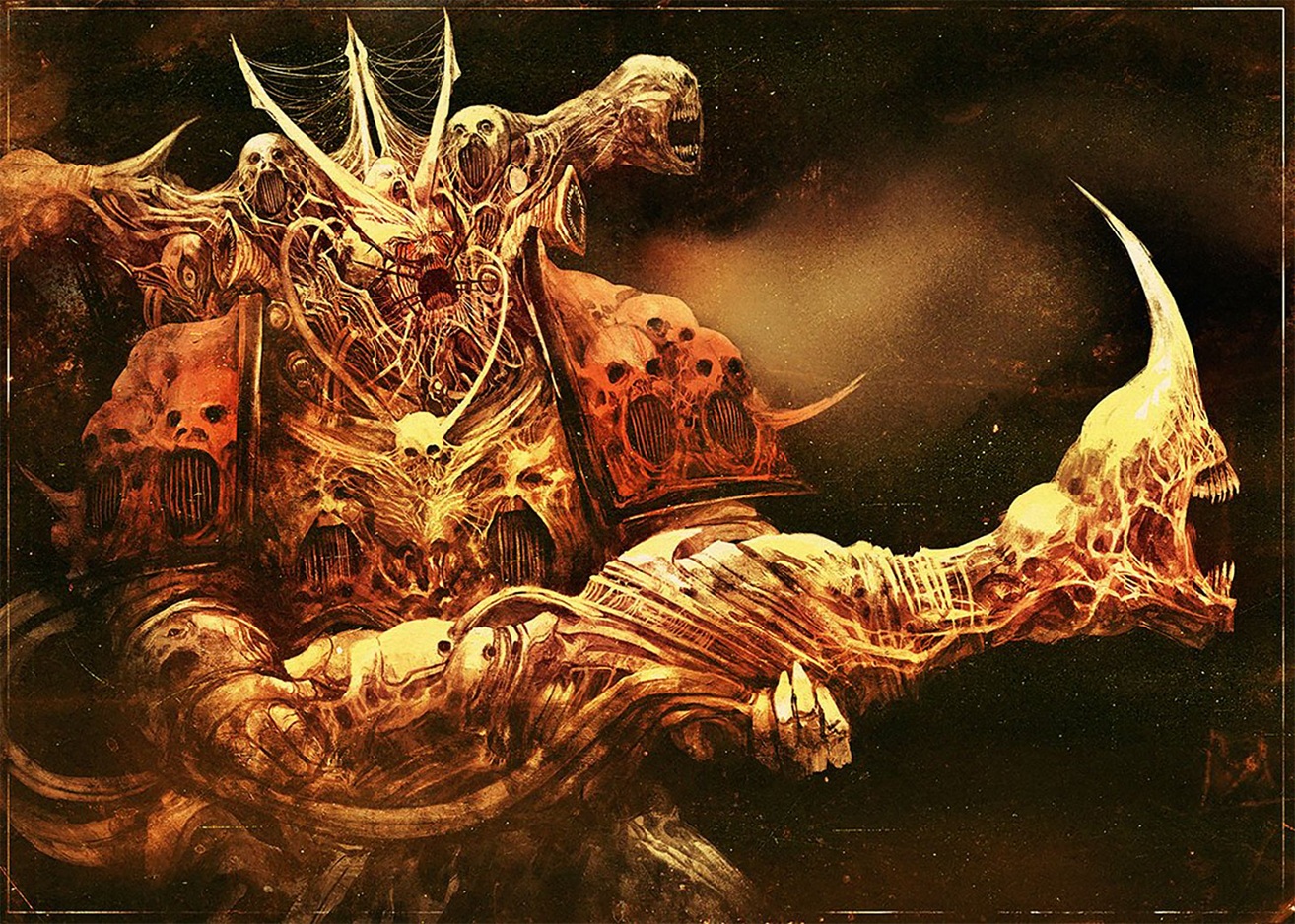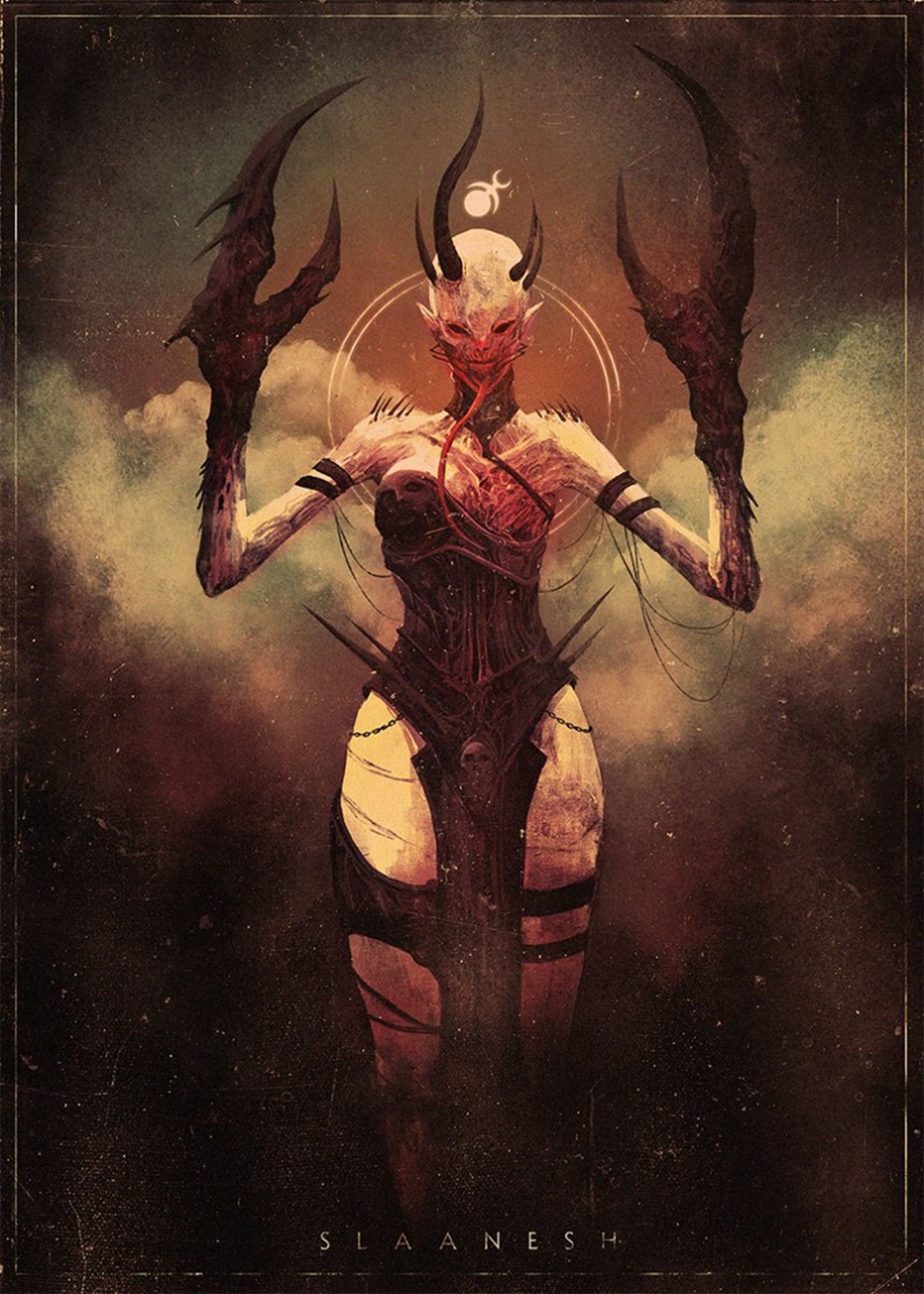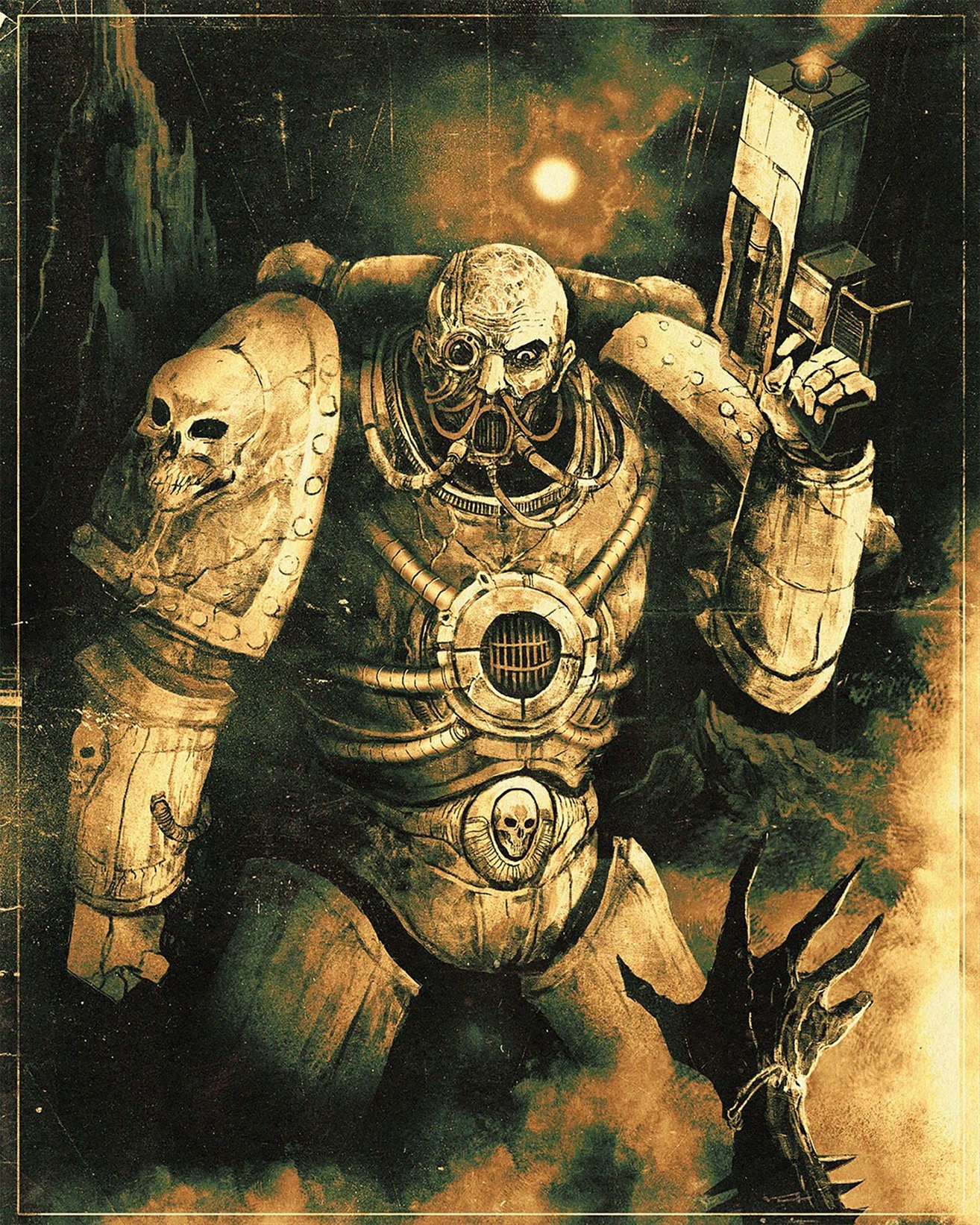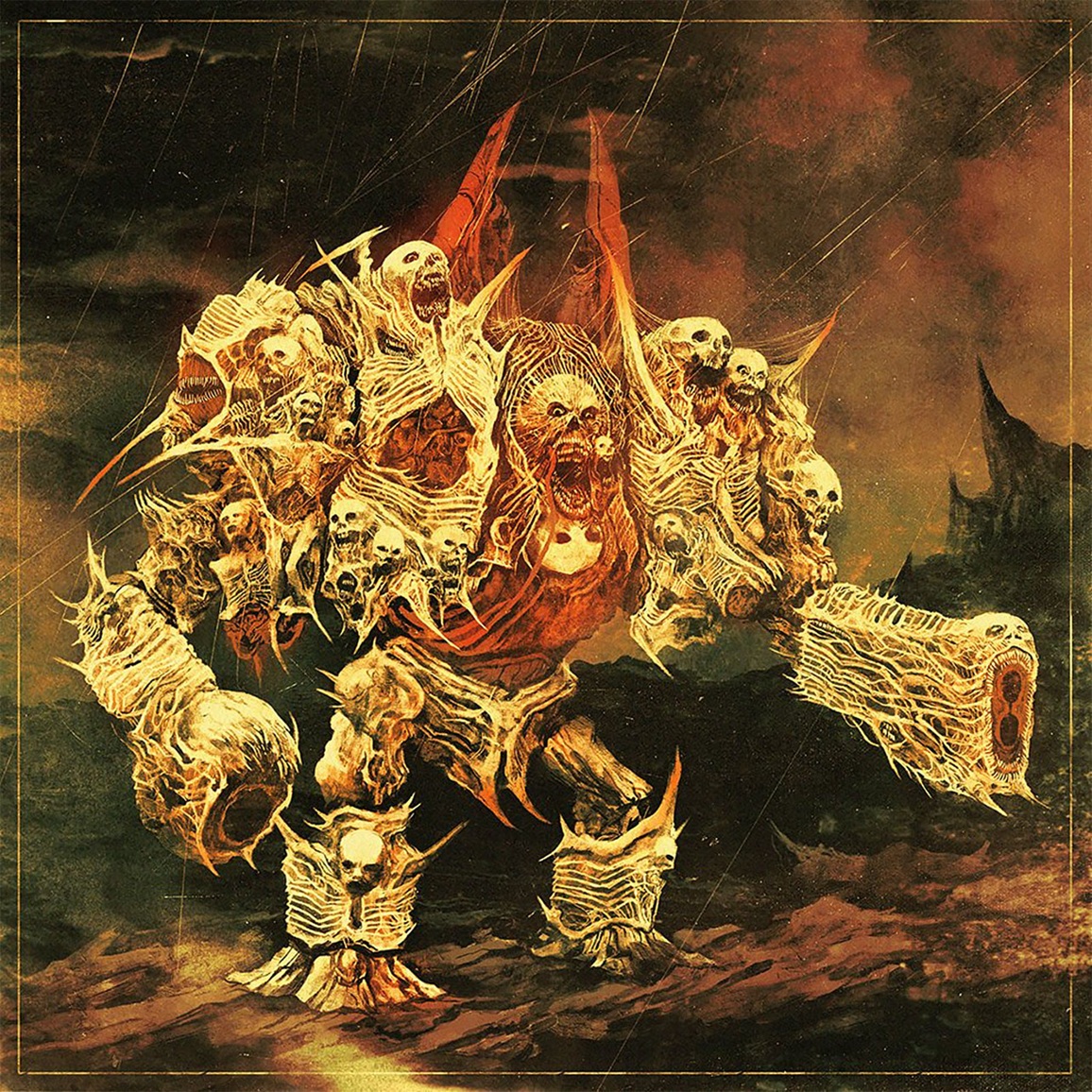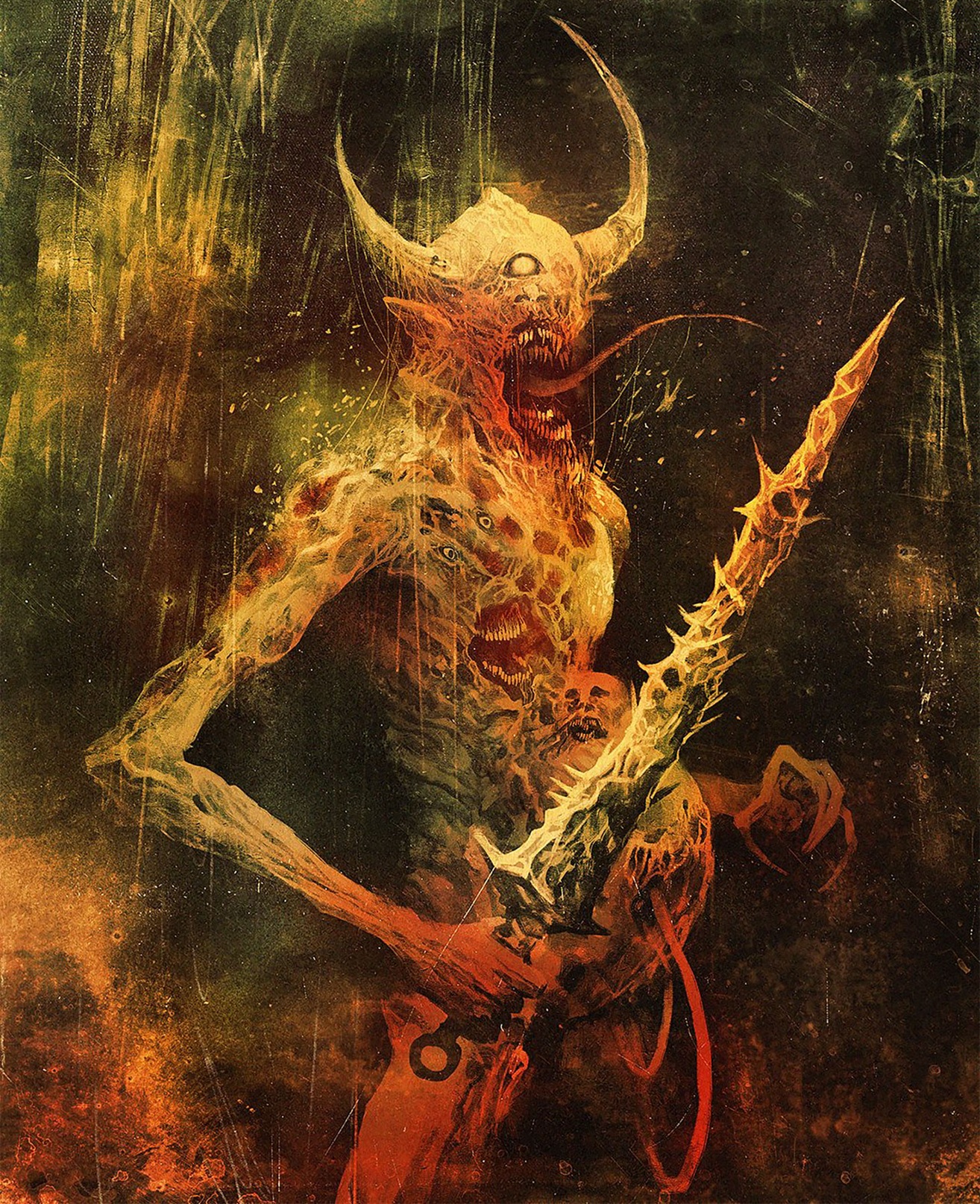
The Unclean One’s Herald: A Study in Pestilent Majesty
First Impressions of the Unclean One’s Herald
This artwork captures the disturbing majesty of a Plaguebearer, one of Nurgle’s daemonic foot soldiers, in a blazing inferno of pestilent orange and decayed yellows. The creature’s emaciated form is both skeletal and bloated, as if starved and swollen by rot all at once. Its head is crowned with elongated horns, curling like diseased branches, while a gaping maw filled with jagged teeth screams eternally. The single, jaundiced eye stares forward blankly, radiating an eerie and unnatural calm. Around its body, strange pustules and secondary mouths seem to squirm, suggesting a form that is never truly at rest. The backdrop is chaotic, scratched and washed in grime, reflecting the corruptive chaos that Nurgle’s minions trail in their wake.
Anatomy of Pestilence and Blight
The Plaguebearer is shown wielding a jagged, corroded sword, its edges resembling broken bone fused with rusted metal, perhaps diseased as much as deadly. Its arms are stretched and sinewy, bone and tendon barely holding the corrupted flesh together, revealing veins that pulse with contagion. A closer look reveals several unnatural eyes embedded in its arms and torso, ever watchful, ever judging. The tongue lolls unnaturally from its mouth, as if tasting the thick, fetid air for more victims to infect. The body is covered in lesions and oozing wounds, but the Plaguebearer stands proudly, unbothered by its grotesque state. It is a walking parody of life, thriving in what should have been decay.
Lore of the Plaguebearers
Plaguebearers are the Lesser Daemons of Nurgle, the Chaos God of disease, decay, and rebirth. They are born from the souls of mortals who died from Nurgle’s pox and were especially obsessed with counting or order in life—twisting their rigidity into ironic servitude under the Lord of Pestilence. Each Plaguebearer is charged with maintaining Nurgle’s Garden, the festering realm of his power, cataloguing every contagion, and tending to the endless cycle of rot. Despite their grotesque form and shuffling gait, they are surprisingly disciplined among daemonic entities, often marching in rank and file. They are often referred to as the Tallymen of Nurgle, ever counting, ever muttering sacred numbers of decay. Their monotone droning forms a sickly hymn to their master, blending purpose and plague into one foul existence.
Heralds of the Lord of Flies
In battle, Plaguebearers are terrifying. Though slow and shambling, they are relentless and nearly impossible to kill, as their corrupted flesh resists blades and bolters alike. Wounds that would fell a mortal simply ooze with foul fluids and knit themselves together with unnatural resilience. Swarms of flies follow them wherever they go, clouding the vision of enemies and spreading disease even before the daemons strike. The swords they carry, often known as Plagueswords, are infused with festering magic that rots flesh and soul on contact. Plaguebearers rarely show emotion, their faces fixed in a ghoulish grimace, as if frozen mid-scream by some unspoken suffering. And yet, they fight with devotion, not out of malice, but out of reverent service to Grandfather Nurgle.
Aesthetic of Ruin and Horror
This piece leans heavily into expressionist horror, using texture and smeared forms to enhance the sense of filth and chaos. The lighting emphasizes the contrast between the daemon’s diseased body and the shadows that envelop it, making the figure seem like it’s crawling from some hellish nursery of corruption. The painter’s brush seems to have been dragged through pus and tar, the strokes long and erratic, as if the decay itself shaped the image. Its blade almost glows, not with light, but with festering power, as though every edge carries a sickness waiting to burst forth. The entire scene feels like it exists within a fever dream—blurry, seething, and dripping with rot. It’s a grotesque homage to Nurgle’s joy in pestilence, where even damnation is meticulously catalogued.
